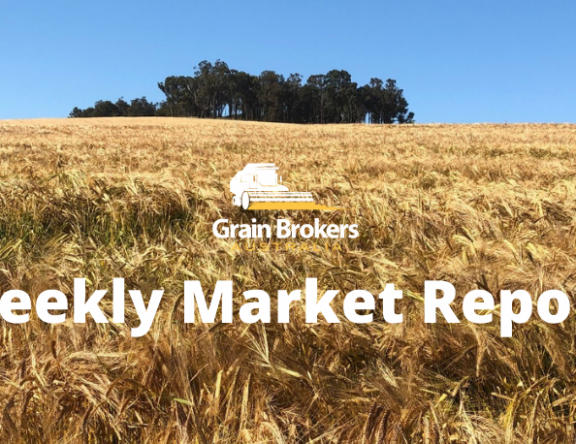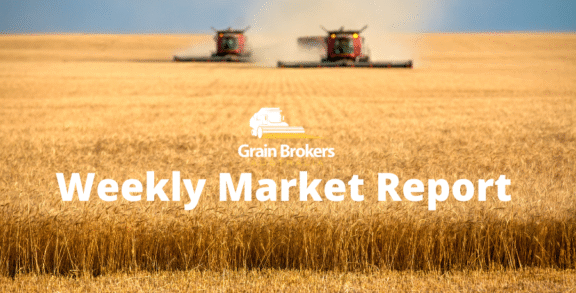
Chinese wheat buyers have been scouring the globe for wheat supplies in recent months, scooping up cheap wheat to replace the domestic production lost, and the quality downgrades suffered when torrential rains flooded wheat fields across the country’s main winter-cropping provinces back in late May and early June.
The true scale of the damage to domestic production from the rain and flooding is very sketchy, as are the degree and extent of the quality downgrades suffered by domestic producers, but back in July, Chinese authorities did report a 0.9 per cent fall in this year’s wheat crop to 134.53 million metric tonne.
It is widely believed that the rains saw large quantities of the harvest downgraded to feed, rendering it unsuitable for human consumption and leaving China quite short on quality milling wheat. Accordingly, the trade has long speculated that China would need to buy large quantities in the 2023/24 marketing year, which commenced on July 1, to supplement domestic production and replenish state reserves that have been depleted in the high-price environment in recent years. That would go a long way to explaining the voracious Chinese buying in recent months.
The latest trade spree involved soft red winter (SRW) wheat from the United States, with a round of buying last week bringing known purchases of SRW wheat over the past three weeks to around 680,000 metric tonne. The initial purchase of 220,000 metric tonne reported in early October was China’s biggest single purchase of US wheat in over two years and the first single sale of US wheat to any destination that exceeded 100,000 metric tonne since November last year. With the SRW balance sheet the tightest of all wheat categories in the US, there is reportedly very little capacity for sales to China of much more than double the current SRW figure.
The US splurge came hot on the heels of substantial purchases of French, Australian and Canadian wheat over the last three months and coincided with a gradual fall in international wheat prices, which hit a three-year low late last month. China has reportedly purchased at least 2.5MMT of wheat since the beginning of September for shipment in the November to February period. That includes at least 30 panamax cargoes of French wheat, totalling more than 1.8MMT. Some reports out of France say the figure could be much higher, and the export stem is littered with vessels loading wheat marked “destination China” for the balance of the year.
Beijing has managed to snap up as much old and new crop Australian wheat as it could over the last couple of months. However, with prices increasing on the back of the El Nino weather phenomenon and building drought conditions across much of the country, competitiveness has decreased, particularly off the eastern seaboard.
That said, China was active in the Australian market again last week and new crop wheat sales are widely believed to exceed 2.0MMT already and could easily be as high as 2.5MMT. Add the 1MMT of old crop shipped in July and August, conservatively assume at least 0.5MMT of old crop shipments in September and October, and 2023/24 season sales very quickly approach 4MMT.
China’s demand for Australian wheat has also had to compete for late-season elevation capacity with its own renewed demand for Australian barley after the anti-dumping tariffs and countervailing duties imposed in May 2020 were axed back in August. China resumed barley purchases almost immediately, which meant much of the uncommitted old crop shipping capacity (up to the end of October) in Western Australia and South Australia was allocated to barley. With wheat values off the eastern seaboard of Australia much higher than export parity at the time, China turned to France to meet some of its nearby milling wheat demand.
China adopts a quota system to manage the import of food staples such as wheat and it seems certain that it will exceed the annual allocation in 2023/24. The wheat quota allows 9.636MMT of imports each year at a tariff of one per cent, with around 90 per cent of those purchases allocated to government businesses. For imports above that cap, the tariff rises to 65 per cent, a financial obstacle that generally pushes private buyers out of the equation, leaving the state-owned giants to do the heavy lifting above that level. The quota had never been totally exhausted until the 2020/21 marketing year when wheat imports went past 10MMT for the first time, finishing at 10.62MMT.
According to the USDA, China was the world’s biggest wheat importer in the 2022/23 marketing year, with 13.28MMT discharged at the country’s numerous coastal and river ports. This is up from 9.57MMT a year earlier, with Australia shipping 7.66MMT, or 57.7 per cent of the total. Turkiye was the second biggest importer on 12.5MMT, followed by the European Union on 12.09MMT and Egypt, the former leader of the pack, dropping off the podium with 11.22MMT.
In the first eight months of the 2023 calendar year, Chinese imports totalled 9.56MMT, with 5.7MMT, or 59.6 per cent, sourced from Australia. With one month of export data yet to be released for Australia’s 2022/23 marketing year (Oct-Sep), wheat exports to China are certain to set a new record, having already exceeded the previous season’s benchmark of 6.11MMT. After 11 months, exports are sitting at 7.36MMT, 24.3 per cent of total Australian wheat exports since October 1, 2022.
Precisely what motivated the United States Department of Agriculture to decrease Chinese wheat imports for the 2023/24 season by 1MMT to 11MMT in its September global supply and demand update is a mystery. As is leaving it unchanged in the October update when larger than usual early season purchases from France, Australia and Canada had already been reported, the first US buying action was evident, and rumours of more US demand persisted. All indications season-to-date suggest a new wheat import record for China is almost inevitable in 2023/24.
Call your local Grain Brokers Australia representative on 1300 946 544 to discuss your grain marketing needs.





